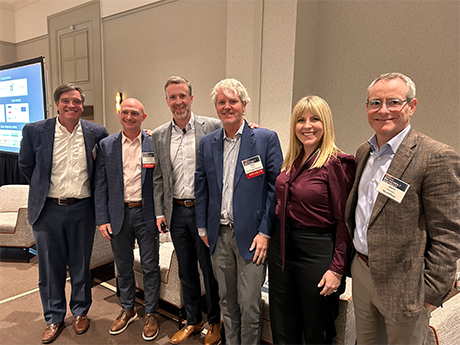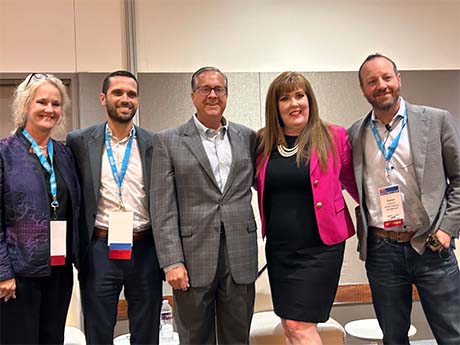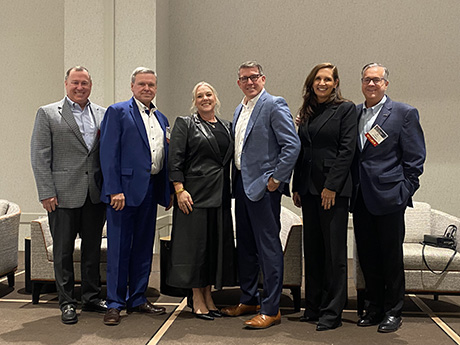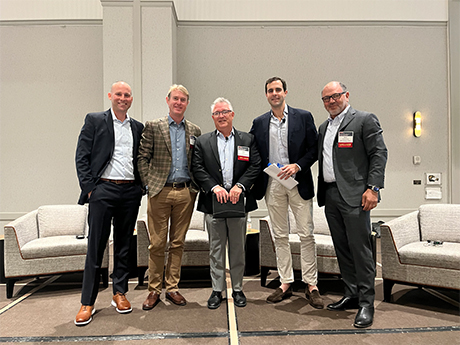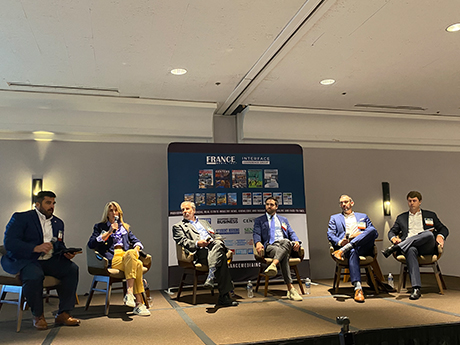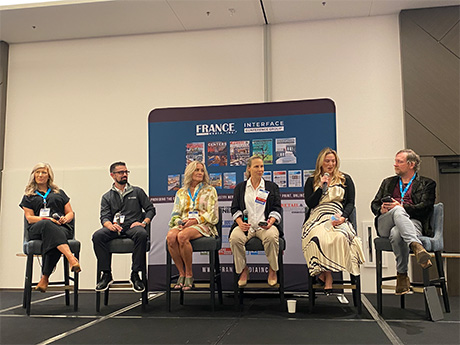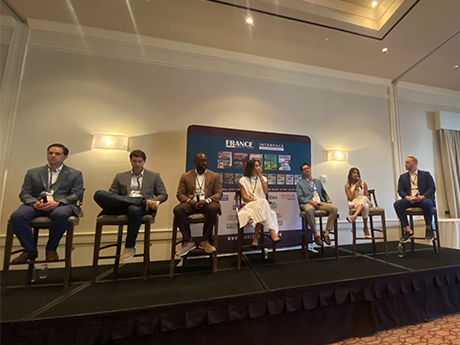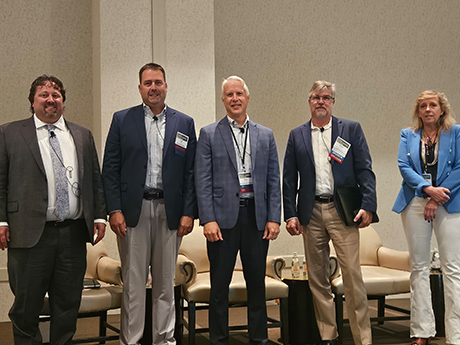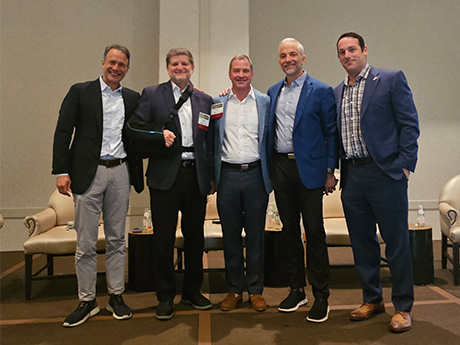ATLANTA — Jason Nettles, managing director at Northmarq’s Atlanta office, is well-versed on the recent history of U.S. apartment deliveries, knowledge that came in handy for launching discussion among developers at the 16th annual InterFace Multifamily Southeast conference. Nettles moderated a panel of five regional developers, all of whom also share keen awareness of just how much new multifamily product U.S. markets — particularly those in the highly desirable Sun Belt regions — have added in recent years. In these areas, supply growth is both a dominant narrative on the surface of the multifamily development scene and an invisible hand that guides business decisions behind that scene. Massive blips in supply, whether positive or negative, impact key facets of underwriting, including rent growth assumptions and concessions, as well as financing terms on both the debt and equity sides of the capital markets. Those figures and assumptions must then be evaluated against hard costs of development, which as a rule do not decline over time, but rather grow at varying paces. Editor’s note: InterFace Conference Group, a division of France Media Inc., produces networking and educational conferences for commercial real estate executives. To sign up for email announcements about specific events, visit www.interfaceconferencegroup.com/subscribe. All …
Conference Coverage
By Taylor Williams DALLAS — Technological innovation has long been a cornerstone of managing and leasing multifamily properties, and that feature of the business has only been augmented in the era of artificial intelligence (AI). But for all the operational conveniences and efficiencies that AI potentially brings to the table, multifamily management has not yet reached the point of phasing out the human element. Almost immediately after the members of the leasing and management panel at the annual InterFace Multifamily Texas conference had introduced themselves, this fundamental premise of multifamily management was put forth to a crowd of several hundred real estate professionals — men and women who have built careers based on human relationships. The message to those at the conference, which took place in late September at the Westin Galleria Hotel in Dallas, seemed to be one of reassurance, that even as AI seemingly infiltrates every aspect of human life and threatens to void millions of jobs, the human principles that have long governed real estate transactions remain intact. At least for now. Editor’s note: InterFace Conference Group, a division of France Media Inc., produces networking and educational conferences for commercial real estate executives. To sign up for email announcements …
InterFace Panel: Multifamily Operators Are Charting a Path from Oversupply to Opportunity in 2026
by Abby Cox
ATLANTA — The multifamily market in the Southeast still prevails as one of the nation’s most dynamic real estate ventures, but one aspect in particular is casting a dark shadow — the cultivation of oversupply in the region. When the demand for housing during and after the COVID pandemic increased, developers energetically responded with an aggressive building boom. However, when new supply began to outpace demand, vacancy crept up and concern for the market became more prominent. “We put shovels in the ground and started developing — and now we’re paying for that sin,” said Greg Mark, executive managing director at Cushman & Wakefield. “Across the board, we’re just not seeing the same kind of returns.” Mark’s comments came at the operations panel during the 2025 InterFace Multifamily Southeast conference, which was held at the InterContinental Buckhead in Atlanta. Co-hosted by France Media’s InterFace Conference Group and Multifamily & Affordable Housing Business magazine, the two-day event attracted a little more than 300 attendees. Ed Wolff, CEO of Dallas-based Aerwave, moderated the panel. Editor’s note: InterFace Conference Group, a division of France Media Inc., produces networking and educational conferences for commercial real estate executives. To sign up for email announcements about specific events, visit www.interfaceconferencegroup.com/subscribe. Karen Key, Southeast …
ATLANTA — For many multifamily professionals, 2025 is a year to forget. Paul Berry, president and chief operating officer of Mesa Capital Partners, said that U.S. multifamily investment sales are on track to close out the year at $125 billion, which represents a 25 percent decline from an average pre-COVID year and a little more than a third of 2021’s total (a torrid $354 billion). Andrew Zelman, senior vice president of Southeast investments at Boston-based GID Multifamily, said that owners are doing “everything they can to hold out for a profit.” Editor’s note: InterFace Conference Group, a division of France Media Inc., produces networking and educational conferences for commercial real estate executives. To sign up for email announcements about specific events, visit www.interfaceconferencegroup.com/subscribe. “As simplistic as this is, sellers will avoid transacting at less than peak values at any cost,” said Zelman, who added that owners are essentially kicking the can down the road by recapitalizing their assets or stopping and starting the marketing process if their pricing expectations aren’t being met. Zelman’s comments came during the opening panel on Tuesday, Dec. 2, at the 2025 InterFace Multifamily Southeast conference, which was held at the InterContinental Buckhead in Atlanta. Co-hosted …
By Taylor Williams Although the Dallas-Fort Worth (DFW) industrial market is, objectively speaking, currently overbuilt, the recovery and return to healthy dynamics is already taking shape. As that unfolds, manufacturing facilities are having a moment. According to CBRE’s research, between 2021 and 2023 — the height of the post-COVID e-commerce craze that coincided with the last days of historically low interest rates — developers in DFW added nearly 130 million square feet of new industrial product. The supply boom mostly involved warehouse and distribution facilities, and absorption of new deliveries was coming along until this spring, when Liberation Day injected a staggering dose of economic uncertainty into the market. In recent weeks, leasing activity has begun to pick back up. But investors looking to deploy capital into industrial assets see more upside on deals for manufacturing facilities at the moment, whether that means buying existing plants with heavy built-in power sources or targeting distribution buildings that can support manufacturing through light conversions. Editor’s note: InterFace Conference Group, a division of France Media Inc., produces networking and educational conferences for commercial real estate executives. To sign up for email announcements about specific events, visit www.interfaceconferencegroup.com/subscribe. At the annual DFW/North Central Texas Industrial conference that …
By Taylor Williams DALLAS — As a metroplex, Dallas-Fort Worth (DFW) has the physical sprawl, population density, pace of job growth and volume of housing development to fairly be labeled as one of the biggest consumer markets in the country, on par with New York City and Los Angeles. It’s the extent to which affordability has matured in New York City and Los Angeles that marks the key difference between DFW and the coastal behemoths. Aside from rental housing, no asset class within commercial real estate captures a given market’s affordability better than retail. Retail rents in the most sought-after corridors and districts of New York City and Los Angeles seemingly have no ceiling, and that is reflected in the prices of the products and services that are dispensed from those spaces. Editor’s note: InterFace Conference Group, a division of France Media Inc., produces networking and educational conferences for commercial real estate executives. To sign up for email announcements about specific events, visit www.interfaceconferencegroup.com/subscribe. It’s fair to assume that for most households that have relocated from the coasts to DFW, housing and jobs have been the most decisive factors. Yet retail spending does account for a good chunk of the average family’s disposable …
By Taylor Williams It’s a tough time in the Austin multifamily market, and architects and general contractors (GCs) are being asked to do their part to minimize the financial distresses of their developer clients and to facilitate the work of the agencies that lease the buildings they design and build. The state capital is on the back nine — it’s tough to say which hole precisely — of an apartment building frenzy that materialized in the immediate post-COVID era. Times were starkly different then in terms of costs of capital and trended rent projections, and developers and their capital partners made hay while there was light. Project partners on developments that were delivered in the past 12 to 18 months as part of the building boom may not have felt as acutely pressured to design for efficiency. But those working on new projects today do not have that luxury and are being asked to think and design with cost savings in mind. Editor’s note: InterFace Conference Group, a division of France Media Inc., produces networking and educational conferences for commercial real estate executives. To sign up for email announcements about specific events, visit www.interfaceconferencegroup.com/subscribe. One could argue that developing multifamily product with financial …
Executing ground-up development for pure-play retail space — or retail product in mixed-use settings — in Houston is immensely challenging these days for a variety of reasons. This is in spite of the fact that the city has the underlying job and housing growth needed to justify a greater inventory of retail product. While all retail developers in Houston face similar headwinds in terms of costs of capital and construction materials/labor, as well as elevated tenant improvement (TI) costs and hefty required return thresholds from investors, it’s difficult to single out any one of those factors as most responsible for the dearth of new retail development. Some issues will be felt more acutely in some submarkets than others. Certain companies may have better connections and capital situations such that they can circumvent some of the uncontrollables. But no matter the combination of barrier-to-entry factors, the net result is the same: a market that cannot adequately supply retail product to meet demand. Editor’s note: InterFace Conference Group, a division of France Media Inc., produces networking and educational conferences for commercial real estate executives. To sign up for email announcements about specific events, visit www.interfaceconferencegroup.com/subscribe. At the annual InterFace Houston Retail & Mixed-Use conference that …
InterFace Panel: Seniors Housing Design Blends Hospitality, Technology for Next Generation of Residents
by Abby Cox
ATLANTA — As the demand for “age appropriate” living solutions continues to rise, seniors housing real estate is evolving rapidly. Modern developments are moving beyond the scope of previous institutional models that are stuck in the past and accelerating forward into physical environments that promote dignity, independence and community for the next generation of residents. The new wave of seniors housing residents are individuals who often have different expectations, lifestyles and needs compared to previous generations when it comes to their housing options. Whether it is a tech-savvy grandmother or a health-conscious grandfather, each generation of seniors finds aspects of life that they value more than their predecessors. Editor’s note: InterFace Conference Group, a division of France Media Inc., produces networking and educational conferences for commercial real estate executives. To sign up for email announcements about specific events, visit www.interfaceconferencegroup.com/subscribe. Health and wellness is an especially important component of seniors housing developments coming on line, as today’s older adults are living longer, staying more active and placing significance on quality of life. Connie Wittich, founding principal and CEO of Metropolitan Studio, highlighted that people want to live in beautiful places that focus on mental health and wellness, specifically. “We receive a lot of …
ATLANTA — The seniors housing sector stands at a “curious” crossroads in terms of the current real estate cycle, according to Chris Guay, CEO of Vitality Living. The Brentwood, Tenn.-based company is a seniors housing owner-operator with communities located across the Southeast and Texas. Guay asserts that on one hand, seniors housing owners and operators are still healing from the supply-and-demand shocks stemming from the COVID-19 pandemic. On the other, the sector is standing on the precipice of the prophesied “silver tsunami,” a phenomenon wherein the baby boomer generation is aging into needing senior living care. Editor’s note: InterFace Conference Group, a division of France Media Inc., produces networking and educational conferences for commercial real estate executives. To sign up for email announcements about specific events, visit www.interfaceconferencegroup.com/subscribe. The oldest baby boomers are now turning 80, and Guay says that even if developers met the output of the highest point of the previous cycle annually, it still wouldn’t be enough to satisfy the wave of demand coming. “The silver tsunami is actually here,” says Guay. “Right now is probably the most interesting time in the industry that I can remember.” Guay’s comments came during the “power panel” at InterFace Seniors …
Newer Posts


